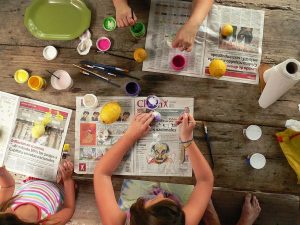 As educators, we understand that children are not one-size-fits-all learners. They embark on a journey of growth and development from the moment they are born, and it’s important for us to adapt our teaching methods to meet their evolving needs. One approach that has proven to be effective across the stages of development is play-based learning. In this post, we’ll explore the importance of aligning play-based learning with the different stages of child development, from infancy to early adulthood.
As educators, we understand that children are not one-size-fits-all learners. They embark on a journey of growth and development from the moment they are born, and it’s important for us to adapt our teaching methods to meet their evolving needs. One approach that has proven to be effective across the stages of development is play-based learning. In this post, we’ll explore the importance of aligning play-based learning with the different stages of child development, from infancy to early adulthood.
Infancy to Early Childhood (0-6 years): Building a Strong Foundation
During the early years of life play is the primary mode of learning. Infants and toddlers use play to explore their world, develop their motor skills, and begin to understand the concept of cause and effect. As educators, our role is to provide a safe and stimulating environment that encourages this natural inclination towards play.
- Sensorimotor Play (0-2 years): Infants and toddlers engage in sensorimotor play, which involves activities that stimulate their senses and motor skills. Simple toys like rattles, soft blocks, and textured balls are perfect for this stage.
- Symbolic Play (3-6 years): As children enter preschool years, they begin to engage in symbolic play, using their imagination to create scenarios and stories. Play kitchens, dress-up costumes, and building blocks support this stage of development.
Middle Childhood (7-11 years): Fostering Creativity and Problem-Solving
As children enter the middle years they become more independent thinkers and problem solvers. Play-based learning can be aligned with their skill developmental needs by encouraging:
- Exploratory Play: Science experiments, art projects, and hands-on activities allow children to explore their interests and develop critical thinking skills.
- Collaborative Play: Group projects, team sports, and cooperative games teach children important social skills, such as communication, teamwork, and conflict resolution.
Adolescence and Early Adulthood (12-21 years): Connecting Play with Purpose
As students transition into adolescence and early adulthood the focus shifts towards preparing them for the future. Play-based learning can still play a crucial role, but we probably won’t call it “playing” but being on purpose or being task-focused:
- Project-Based Learning: Encourage students to work on projects that align with their interests and career aspirations. This helps them develop valuable skills and gain real-world experience.
- Purposeful Play: Engage students in activities that have a real-world impact, such as community service or entrepreneurship projects. This allows them to see the connection between their learning and the world around them.
In conclusion, play-based learning is a versatile approach that can be tailored to suit the developmental needs of children from infancy to early adulthood. By aligning play with the specific stages of development, educators can create engaging and effective learning experiences that set students on a path to success.
